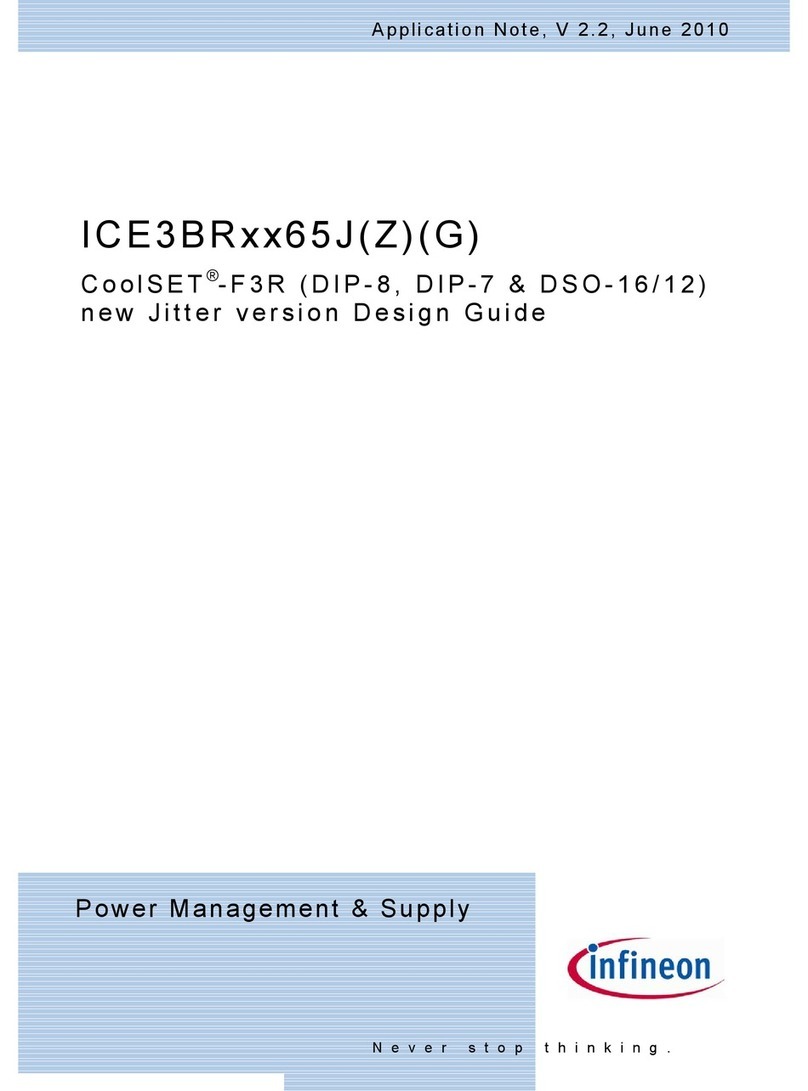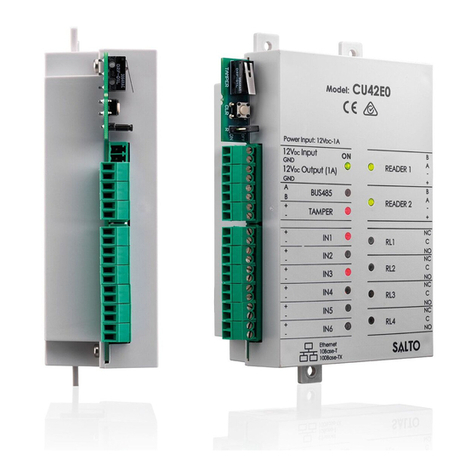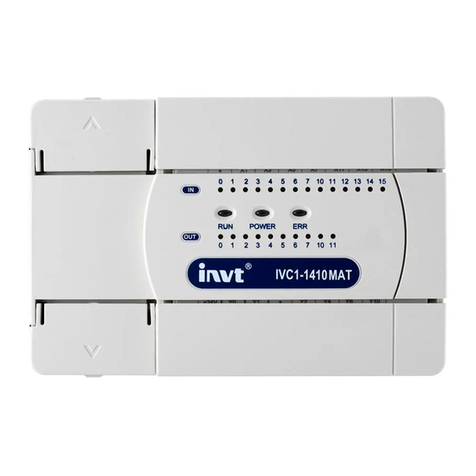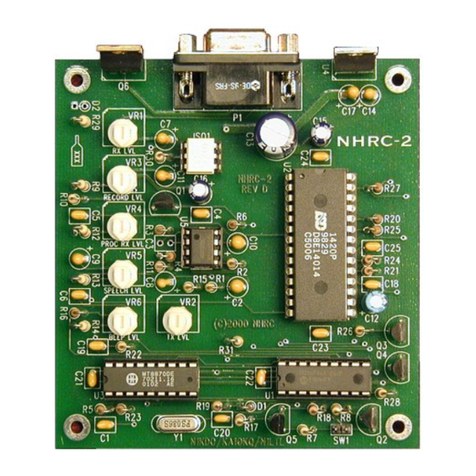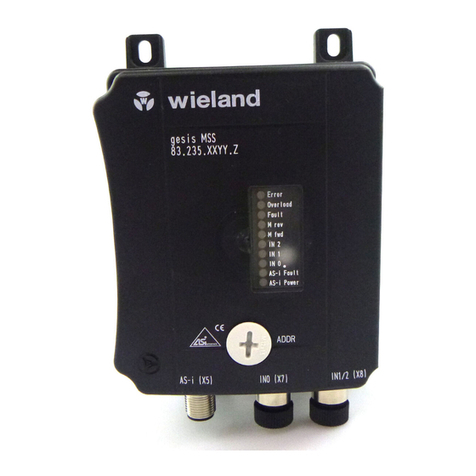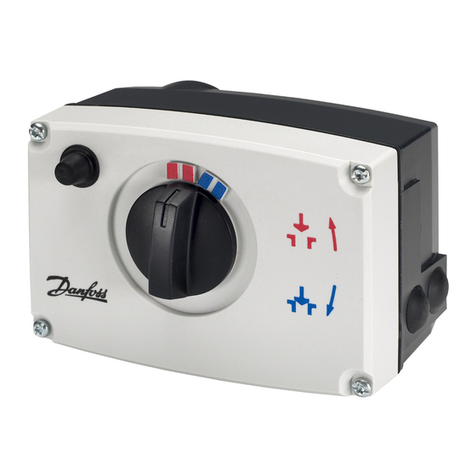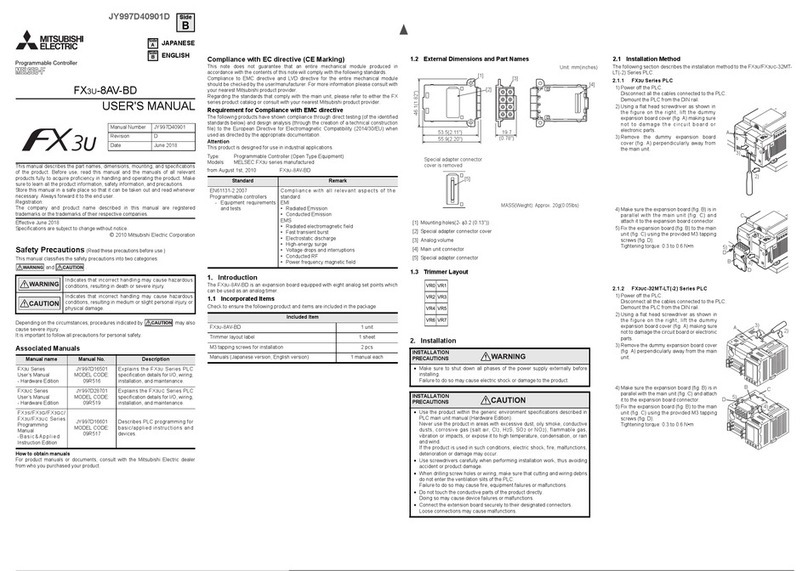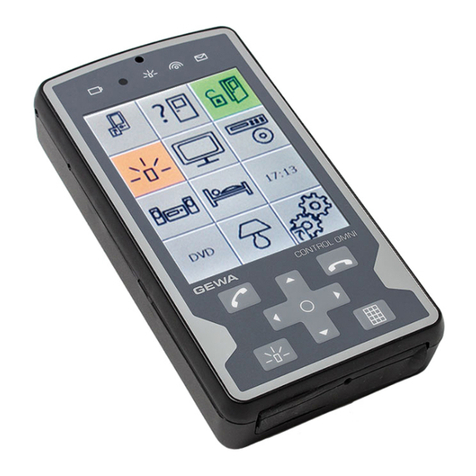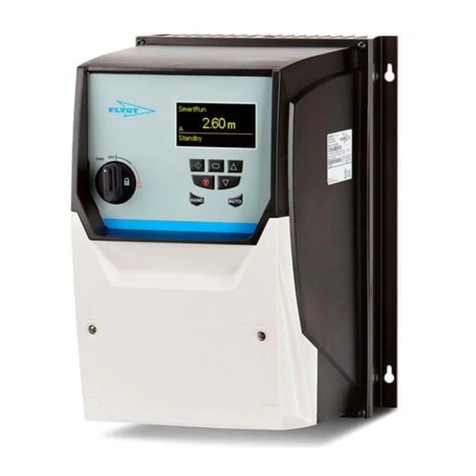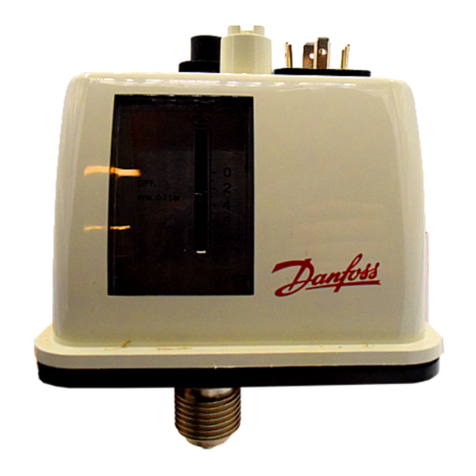PTZOptics PT-BRDCSTR User manual

Rev 1.2 6/16
PTZOptics
PT-BRDCSTR
Broadcast Camera Controller
*camera not included
User Manual

1 Rev 1.2 6/16
Contents
1 Introduction and Precautions ........................................................................................................................ 2
2 Notes.............................................................................................................................................................. 3
3 Features ......................................................................................................................................................... 4
4 Product Specification ..................................................................................................................................... 5
5 Parts and Functions ....................................................................................................................................... 9
6 Supplied Equipment and Accessories .......................................................................................................... 10
7 Installation ................................................................................................................................................... 11
8 System connections ..................................................................................................................................... 18
9 Limits............................................................................................................................................................ 21
10 Physical Dimensions..................................................................................................................................... 22
11 Serial Control ............................................................................................................................................... 23
12 Maintenance and Troubleshooting.............................................................................................................. 24
13 Appendix 1 –VISCA Command List (Basic Set) ............................................................................................ 24

2 Rev 1.2 6/16
1 Introduction
Thank you for using the PT-BRDCSTR Broadcast Camera Controller.
This manual introduces the installation, functions and operation of the PTZOptics PT-BRDCSTR-L (-E or –P) Broadcast Camera Controller. Prior to
installation and usage, please read this manual thoroughly.
Precautions
This product may only be used under specified conditions to avoid damage to the camera and the PT-BRDCSTR.
To prevent the risk of electric shock, never open the product housing. This is only to be performed by a qualified technician.
Do not exceed the specified limits for temperature, humidity or power.
Use only recommended accessories, otherwise malfunction or product damage may occur.
Always permanently mount the PT-BRDCSTR to a stable surface (e.g. wall, ceiling or Heavy Duty Tripod) before mounting the camera on
the PT-BRDCSTR to avoid damage to equipment.
Be sure to protect the power cord during installation and while in use.
Maximum specified combined camera/lens weights must not be exceeded on the camera mounting arm (side load: 11 lbs, top load: 6 lbs).
Do not manually operate the pan or tilt of the PT-BRDCSTR or it may cause permanent damage or malfunction.
When shutting down for short periods, the camera alone may be powered down. For long periods without disconnect power from the
PT-BRDCSTR.
Do not expose the PT-BRDCSTR to rain or moisture.
If necessary to clean the PT-BRDCSTR: be sure to disconnect the power first, do not use spray cleaners, do not use with abrasive cleaning
agents, use soft cloth (only dampened –not dripping) and a mild detergent only.
Please contact PTZOptics prior to using the PT-BRDCSTR if any of the following should occur:
oPower, control line is damaged.
oMains power is wrong type, voltage or frequency.
oUnit is dropped or has loose parts (internal or external).
oDevice appears to be functioning abnormally.

3 Rev 1.2 6/16
2 Notes
Electric Safety - Installation and operation must be done in compliance with any and all applicable local, regional or universal safety
standards and ordinances.
Transport - Avoid stress, vibration and contact with fluids during transport, storage and installation.
Power Supply –Use only the power supply provided with the PT-BRDCSTR. (for ref only: 19VDC / 4.75A).
Installation - Make 100% sure that the camera connection interface and the PTZ-BRDCSTR connection interface match properly before
completing the installation and powering the system on.
Installation - Please ensure there are no obstructions within the range of PTZ rotation (including any lens extension). Damages caused by
collision are not covered under warranty.
Any dismantling of the PTZ-BRDCSTR will violate the warranty on this product.
Owner assumes all responsibility for any damage to a camera caused by mounting camera on or using camera with the PT-BRDCSTR.
It is possible but not likely that the electromagnetic field may affect the image of the camera.

4 Rev 1.2 6/16
3 Features
High accuracy position sensor allows pinpointing the camera zoom position with no accumulated error.
Quiet motor.
Supports Sony, Panasonic, Canon and other broadcast handheld cameras (compatibility of –L, –E or –P is model dependent).
Smart PTZ speed calculation allows for stable motion with no stuttering.
Provides a range of available DC remote power supply settings to remotely power the camera (camera model dependent).
Provides up to 255 pan/tilt precision presets.
0.1°/s Variable speed control for P/T head and lens with PTZ speed as low as 0.1 °/s.
Built-in voltage regulator circuit, provides effective protection of the camera. Detection of overvoltage, undervoltage or overcurrent will
not allow the PT-BRDCSTR to remote power the camera.
Supports control of different brands of cameras and different models of PT-BRDCSTR within the same control network.
oSupports 1:1, 1:Many, Many:1 and Many:Many (i.e. Joysticks/KBs:Cameras).
Pairs ideally with the PTZOptics model PT-BRDCST-JOY joystick/keyboard.
Supports VISCA and Pelco-D control protocols.
Supports software adjustable damping (providing variable head acceleration settings for improved image stability –see Appendix 1).
Supports wall, ceiling and tripod mounting.
Cameras can top load or side load.
The PT-BRDCSTR has it all: small size, big load capacity, low operation noise.

5 Rev 1.2 6/16
4 Product Specification
Model
PT-BRDCSTR-L (or -E or –P)
Name
Broadcast portable camera remote PTZ head
Operational Specifications
Compatible Cameras
‘-L’ model:
Sony PXW-X160, Sony PXW-Z100, Sony PXW-X180, Sony X180,
Sony HXR-NX3, Sony HXR-NX5C, Sony HXR-NX70C, Sony
HXR-MC2500, Sony HXR-MC1500C, Sony NEX-FS700RH, Sony
PXW-FS7, JVC GY-HM850E, JVC GY-HM890E, JCV GY-HM600EC,
JCV GY-HM600KX, JVC GY-HM650EC, JVC GY-HM750E (Requires
DIN 6 to 2.5mm LANC jack converter), JVC GY-HM790E (Requires
DIN 6 to 2.5mm LANC jack converter), Canon XF305, Canon
XF300, Canon XF205, Canon XF200, Canon XF105, Canon XF100,
Blackmagic Design Studio Camera HD, Most models with the
remote lens control jack (2.5mm LANC)
‘-P’ model:
Panasonic AG-HPX173MC, Panasonic AG-HPX260MC, Panasonic
AG-HPX265MC, Panasonic AJ-PX285MC, Panasonic AJ-PX298MC,
Panasonic AG-HVX200MC, Panasonic AG-HMC153MC, Panasonic
AG-HVX203AMC Panasonic AG-AF103A, Panasonic AG-AC130A
Panasonic AG-AC160A, Panasonic AG-AC90AMC Most models
with the remote lens control jack (2.5mm zoom) (3.5mm focus
iris)
‘-E’ model:
Sony PXW-X20, Sony PXW-EX280, Sony PXW-EX260, Sony
PMW-EX1(R), Most models with remote control lens jack (8-pin
mini)

6 Rev 1.2 6/16
Compatible
Joystick/Keyboards
PTZOptics: PT-BRDCST-JOY
Sony: RM-BR300, AWS-G500 etc.
Panasonic: AW-RP555, AW-RP50 etc.
VHD: VHD-KB11 (switcher: VHD-SW0805)
VISCA Protocol controller (via RS232, RS485, RS422)
Pelco-D Protocol controller (via RS232, RS485, RS422)
Computer (via RS232, RS485, RS422)
Rotation Ranges
Pan (Horizontal) = 280° total (-80° to +200°)*
Tilt (Vertical) = 90° total (±45° or 90 to 0° or 0 to -90 or -45 to -
135)*
*Note: Smaller horizontal and vertical range limits are available
via control commands.
Rotation Speed
Horizontal: 0.1 to 25°/s (24 increments)*
Vertical: 0.1 to 20°/s (20 increments)*
*Note: System also includes a hardware set Fast/Slow rotation
speed setting that modifies the control command settings.
Presets
255
Remote Camera Power
Supported
Camera Power Protection
Over-voltage, under-voltage, over-current protection
External Camera Power
Supply
Supported
Controller Distance
3900 ft. (1200m) maximum

7 Rev 1.2 6/16
Maximum Addressable
Systems
7 (VISCA)
254 (Pelco-D)
*Expandable
Communication Protocols
VISCA, Pelco-D
Max Camera Load
Side load:11 lbs. (5kg)
Top load:6.6 lbs. (3kg)
Control Ports
RS-485, RS-422, RS232
Physical & Electrical Specifications
Input Voltage
100-240 VAC @ 50/60Hz / 19VDC
Input Current (Max)
1.6AAC / 4.75ADC
Operating Temperature
32°F to 104°F (0°C to 40°C)
Storage Temperature
-4°F to 140°F (-20°C to 60°C)
Size
W x D x H: 5.32”/8.88 w/ arm x 6.44” x 9.94”
(135mm/226 w/ arm x 164mm × 150mm × 253mm)
Weight
9.7 lbs (4.1Kg) without camera

8 Rev 1.2 6/16
Specific Feature Limitations by Model
Exact features of each model will vary and may also be limited by the specific lens in use with the camera. Some functionality requires custom
programing from the factory:
Function
E Model
P Model
L Model
Pan Control
supported
Supported
Supported
Tilt Control
Supported
Supported
Supported
Variable Speed
Zoom
Supported
Supported
Supported
Focus Sensor
Supported
Supported
--
Focus Switch
--
Supported
--
Focus Control
--
Supported
--
Iris Switch
--
Supported
--
Iris Control
--
Supported
--
Start and Stop
Recording
supported
Supported
Supported
Playback Detection
Supported
Supported
Supported
Menu
--
--
Supported
PTZ DC Power
Supported
Supported
Supported
Command Switch
Supported
Supported
Supported

9 Rev 1.2 6/16
5 Parts and Functions
1. Camera Mounting Tray
2. PTZ Head
3. PTZ Head interface board
MUL: Camera Video Connector (3G-SDI, HD-SDI, CVBS)
LENS: Camera Lens Interface Connector
CAMERA: Camera Remote DC power Connector
(DB9 Connector –Pin-4: 5V, Pin-7: +13V, Pin-8: GND)
CAUTION! If PT-BRDCSTR is supplying remote DC power to the
camera, be absolutely sure of the connector and polarity prior to
connecting the PT-BRDCSTR power to the mains. Damage to the
camera from improper power connection is not covered by
PT-BRDCSTR warranty under any circumstance.
4. PTZ base
5. PTZ side arm
6. PTZ base video interface
MUL: Video System Video Connector (HD-SDI, CVBS)
7. PTZ base power and communication interfaces
Dip Switches: Camera ID (1-3), PT Speed (4), PT Direction (5, 6),
Serial Control Protocol (7), Remote Camera Power (8)
Unit Power: PT-BRDCSTR power interface (19VDC power
supply provided.)
CONTROL IN: RS485/RS422/RS232 interface (8p8c aka RJ45)
C.P.: Camera External DC Power interface.
When remote camera power is being used, this port may be
connected to a dedicated camera power supply. Through this port
the external camera power supply will be fed to the camera
interface board "CAMERA" port, as described in 3 above. (see
Installation section in this manual - bullets 5-7 for external power
configuration).
8. Base cover plate

10 Rev 1.2 6/16
6 Supplied Equipment & Accessories
The following equipment is supplied with the unit:
Qty 1 PTZ side arm
Qty 1 Camera mounting screw
Qty 1 19VDC power supply with N.A. type ‘A’ power cord
Qty 1 Lens control cable (exact cable varies by model)
Qty 3 Socket head wrench (three sizes)
Qty 4 Socket head cap screw (for mounting PTZ Head)
Qty 6 M3x8 Philips head screws (for spare head cover plate
screws and for mounting sensor wheel –used on E & -P
only)
Qty 1 User manual
Qty 1 Tripod Adapter (use Heavy Duty Tripods only!)
Qty 1 Focus sensor (included with –P and –E models)
To ensure a complete and successful installation, you may also
need to purchase the following accessories:
Wall Mounting Bracket: PT-BRDCST-WM
Multi-function controller: PT-BRDCST-JOY
Multi-function switcher: TBD (For manual auto tracking,
switching and multi PTZ devices control)

11 Rev 1.2 6/16
7 Installation (Use a qualified and knowledgeable AV contractor to install)
Step 1: Assembly
The PTZ side arm and camera tray allow for three different orientations for the camera to be mounted on the head, as show below:
Standard Side Load
Standard Top Load
Inverted Side Load
Installation Note Regarding Effective Tilt Range:
The head allows for a total relative tilt range of 90° but is adjustable for a number of effective absolute tilt ranges (±45° or 90 to 0° or 0 to -90°
or -45 to –135°). Therefore, when mounting the side arm using the 4 socket head cap screws, be sure to mount the side arm in the correct
position to achieve your desired absolute tilt range:
CAUTION: Make sure that these 4 screws are tightened properly before mounting the camera on the tray. Never attempt to remove or adjust
the side arm while a camera is mounted to the tray.

12 Rev 1.2 6/16
Step 2: PTZ settings
There eight Dip Switches in the base interface of the PT-BRDCSTR. They are defined as follows:
1. Set PTZ Head address (Dip Sw 1-3)
The default system maximum quantity = 7 (If needed, this may be expanded to an unlimited quantity).
The PTZ address can be set using Dip switches 1 through 3, as follows (ON is 1, OFF is 0, i.e. binary):
Dip Switch Position
321 (note binary positioning)
PTZ Address Setting
000
0
001 (Default)
1
......
……
110
6
111
7
Note: When PTZ Address is set to 0, it will listen to commands sent to all addresses between 0 and 7 (useful for debugging)
2. Set PT Speed (Dip Sw 4)
The PT Speed setting allows for faster or slower overall head movement. It affects all controller Pan/Tilt speed commands, slowing all
speed settings by about 40%. The PT Speed setting can be set using Dip switch #4 (ON is Slow - Default, OFF is Fast)

13 Rev 1.2 6/16
3. PTZ Direction (Dip Sw 5-6)
Dip Switch 5 is used to set the pan control direction
Dip Switch 6 is used to set the tilt control direction
SW5
SW6
ON
OFF (Default)
ON
OFF (Default)
Reverse
Normal
Reverse
Normal
4. Serial Control Protocol (Dip Sw 7)
The PT-BRDCSTR supports two control protocols. The user can select the control protocol required by setting SW7.
SW7
OFF (Default)
ON
VISCA
Pelco-D
5. External Camera Power Supply Mode (Dip SW 8 - also see Note 6, regarding internal power switch and Note 7)
SW8
OFF
ON (Default)
Camera is not powered through
PT-BRDCSTR
Remote Power from Head’s built-n power
supply or C.P. port
Note: When operating in "Remote Power from Head" mode (i.e. SW8 = ON), cycle through the remote commands, during which time the
PT- BRDCSTR will determine whether the camera voltage is within the standard range of the PT- BRDCSTR’s remote power system. If the
camera is not within the standard voltage range, PT-BRDCSTR will not turn on remote power to the camera. In this case, you will need to
use the “Camera is not powered through PT-BRDCSTR” option (i.e. SW8 = OFF). In either case, the PT-BRDCSTR does not necessarily
include your specific camera's correct DC power connector. A custom DB-9 to camera power cable may need to be sourced or
constructed.
6. Camera Remote Power Internal/External selection (also see Note 5, regarding external power switch and Note 7)
The PT-BRDCSTR’s remote-camera-power module’s output voltage has a range of 10.8VDC –13.2VDC and an available amperage of 2A,

14 Rev 1.2 6/16
intended to meet the power requirements of most cameras on the market. To provide compatibility with cameras outside of this range
(voltage mismatch, higher amps), the PT-BRDCSTR provides the option of using an external power adapter to power the camera through
the PT-BRDCSTR. This must be configured using the internal Dip switch “Internal-SW1”
The Internal Dip switch location is shown below:
Internal Dip Switch - Right (remote camera power): Camera will use the internal DC power supply of the PT-BRDCSTR. The available
camera maximum operating current is 2A.
Internal Dip Switch –Left (external camera power): Camera will be powered by an external DC power supply through the base of the
PT-BRDCSTR’s “C.P.” port. The maximum current allowable is 2A. The allowable voltage range is 6VDC - 20VDC.
CAUTION! When Dip switch is set to left (i.e. external camera power), you must be sure to maintain the proper polarity at the “C.P.”input
terminal: (pin is positive, shield is negative).
7. You may also ignore both power configurations in Notes 5 and 6 and simply power the camera directly, using its own power supply. In this
configuration, power commands sent via a controller will not be heard by the camera.
Step 3: Installing PTZ Head
Before the PTZ Head is installed, make sure to follow the instructions below:
1. Whether it is a wall or ceiling mount, make sure that the wall or ceiling and bracket mounting hardware are able to withstand a minimum
of five times the weight of the head plus camera and any other mounted other accessories.
2. If using a tripod head, use only a tripod that is rated for the purpose and the total weight involved. Use an adapter that properly and
securely mounts the head to the tripod.
3. After the PTZ camera is installed, carefully test the pan and tilt limits to ensure that the head, camera and cables are free to move to each
limit without obstruction or cable stress.
4. Select and use only the proper mounting hardware that is rated for the intended purpose and for the total weight involved.
Install as follows:

15 Rev 1.2 6/16
Side Load Wall Mount
Side Load Tripod
Top Load Wall Mount
Inverted Side Load
CAUTION! When installing PT-BRDCSTR, avoid any manual rotation of the side arm, as it may lead to device failure!
Step 4: Installing the Camera
Put the camera on a table and on top of a rolling pencil or similar object that it can pivot on, in order to estimate the camera’s center of gravity.
Adjust the position of the camera tray, so that the center of the camera's load lines up with the pivot point of the side arm as much as possible.
Tighten the camera tray hardware so that it cannot move. Mount the camera to the tray using the hardware provided and ensure that the
camera is securely fixed to the tray and is not able to slide, move or shake.

16 Rev 1.2 6/16
Step 5: Connection
Cable connections
The PT-BRDCSTR and the camera require 3 interface cables:
1. camera power
2. lens control (3 types –model dependent)
3. video signal
Camera power supply cable
DB9--JEITA, 700mm (all models)
Lens control cable (model
Aviation plug - 8 pin round plug, 700mm (for –E)

17 Rev 1.2 6/16
dependent: -L, -E or -P)
Aviation plug - 2.5mm + 3.5mm plug, 700mm (for –P)
Aviation plug - 2.5mm plug, 700mm (for -L)
Video cable
SDI cable (all models)
Notes:
Power cable: If the JEITA connector on the included power supply cable does not match the DC power port on the camera, please cut off the
default JEITA power connector and solder the correct connector on to the power supply cable.
CAUTION: You must be sure that the cable is not attached to the PT-BRDCSTR or any other power source when you cut it!
You must also be sure to maintain the proper polarity of the conductors when soldering on the new connector.
DB9 Pinout Details: Pin-4: 5V, Pin-7: +13V, Pin-8: GND.
After soldering and testing the new cable (it is strongly suggested to use a multi-meter, rather than the camera itself for testing the cable), use
electrical heat shrink or electrical tape to protect and support the soldered area.
Lens cable: Please pay close attention to the lens control port of the camera. Different models use different lens control ports. There are three
styles of control port supported by the PT-BRDCSTR. You must order the correct PT-BRDCSTR model (-L, -E or –P) to match your camera.
8 pin round port (LENS REMOTE)
2.5mm port (LANC/REMOTE)
2.5mm + 3.5mm - ‘Y’ cable ports (ZOOM, FOCUS/IRIS)
Video cable: The BNC connectors and SDI cable will carry CVBS, SDI, HD-SDI or 3G-SDI video signals equally well depending upon the output
signal of your camera.

18 Rev 1.2 6/16
8 System Connections
Examples of PT-BRDCSTR connections with other external devices:

19 Rev 1.2 6/16
Table of contents
Other PTZOptics Controllers manuals
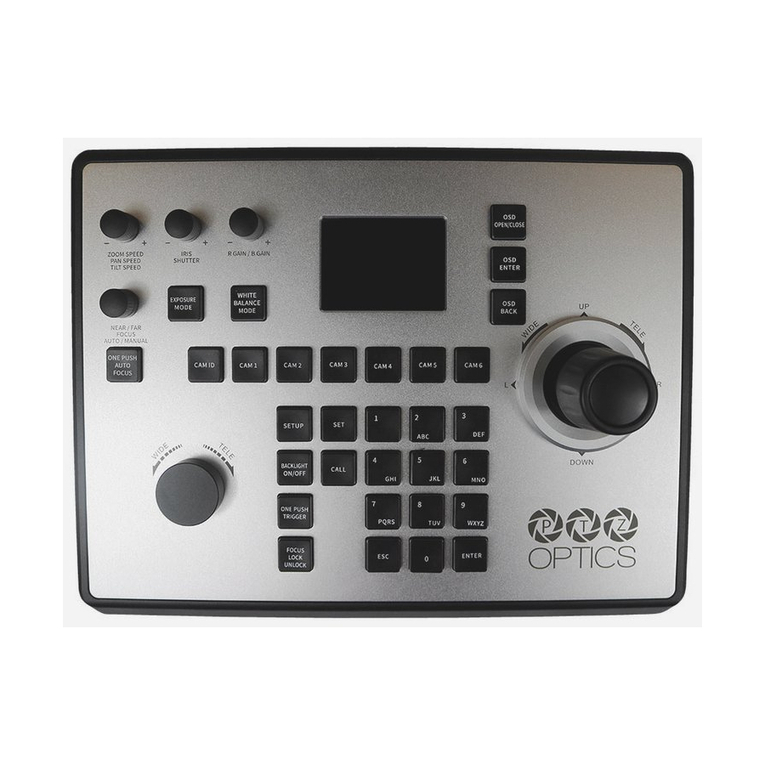
PTZOptics
PTZOptics PT-JOY-G4 User manual

PTZOptics
PTZOptics PT-JOY-G4 User manual
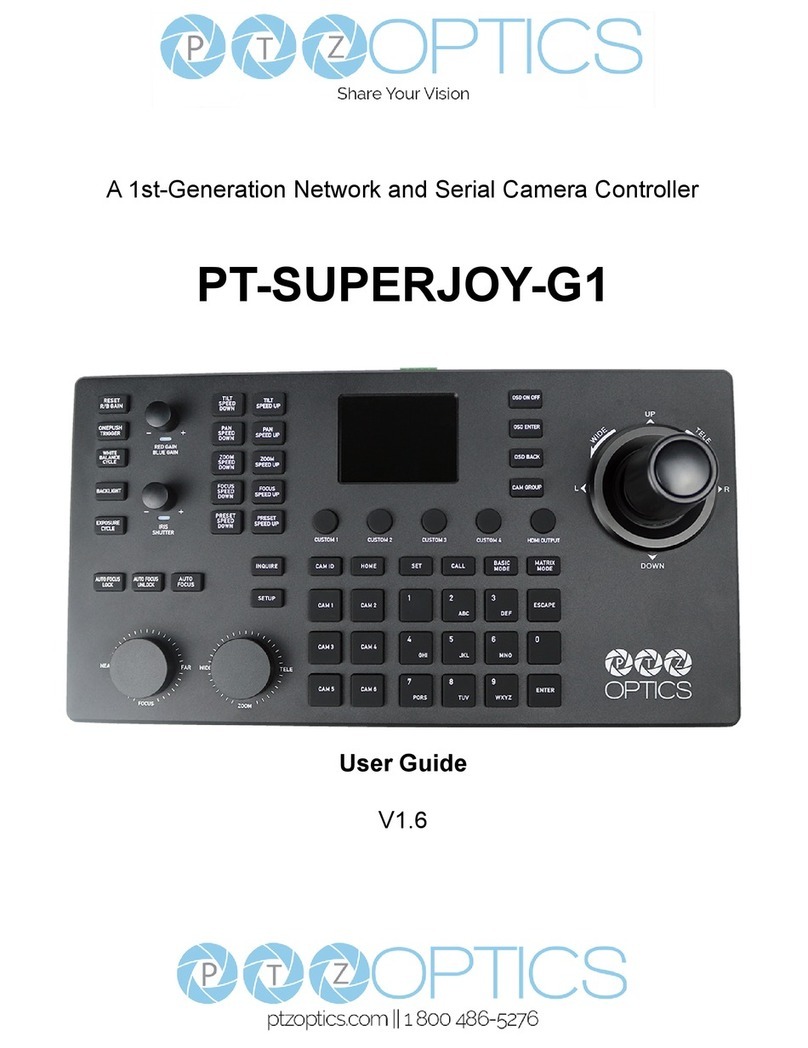
PTZOptics
PTZOptics PT20XSE-PRODUCER-JOY4 User manual
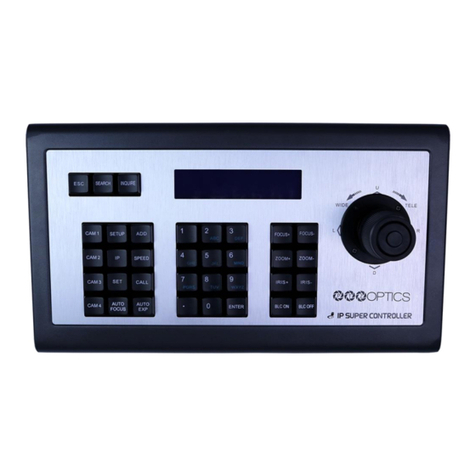
PTZOptics
PTZOptics PT-JOY-G2 User manual
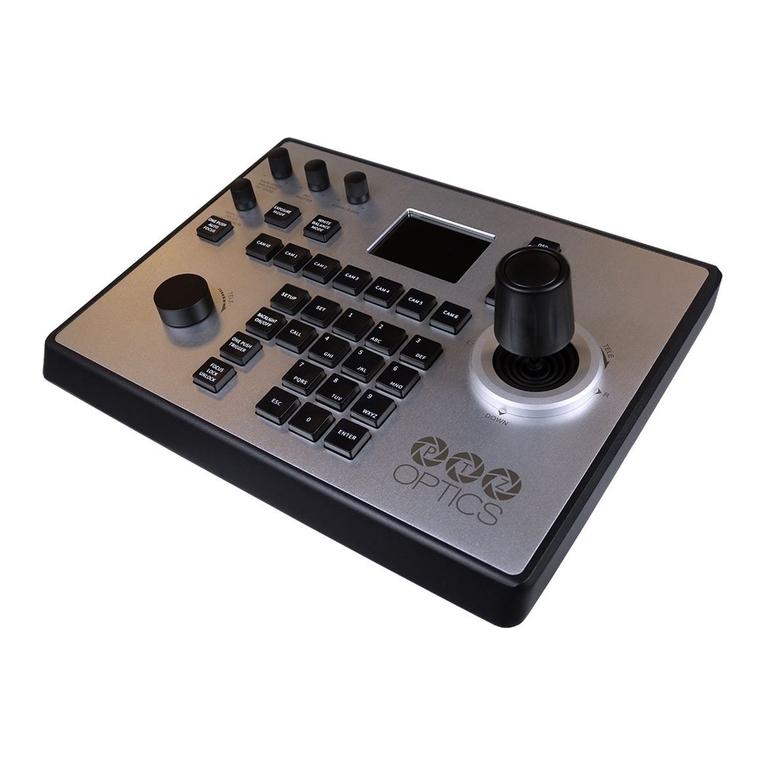
PTZOptics
PTZOptics PT-JOY-G4 User manual
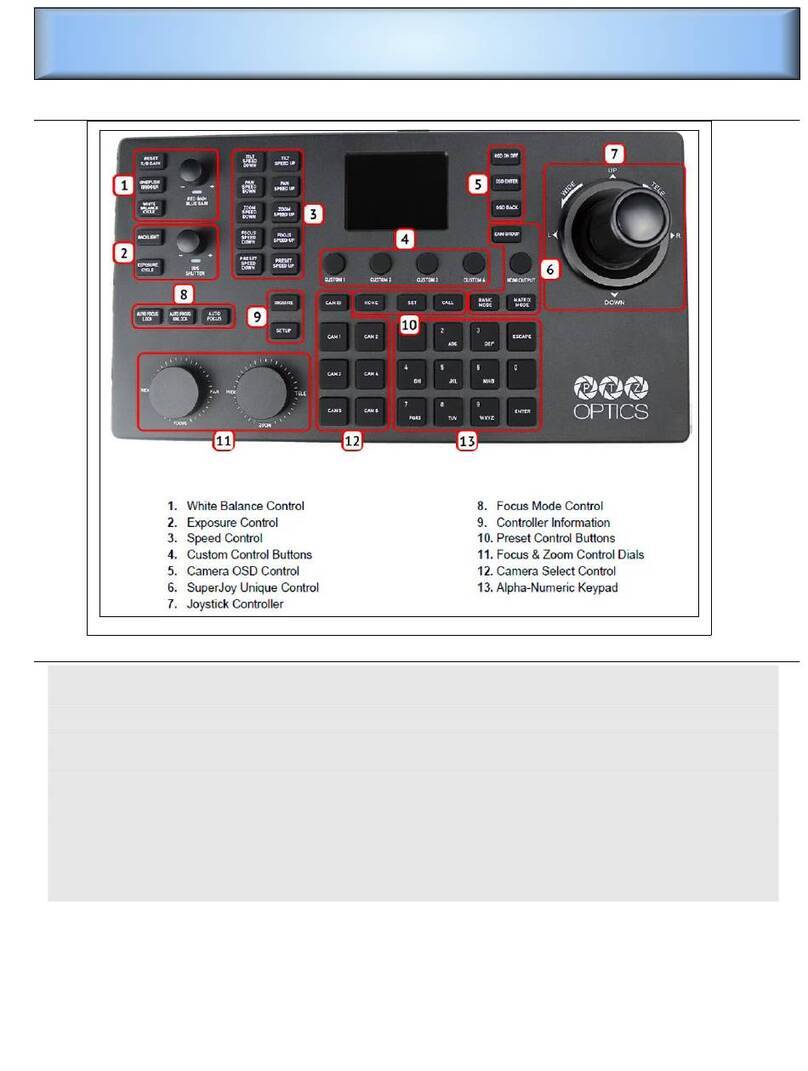
PTZOptics
PTZOptics PT-SUPERJOY-G1 User manual

PTZOptics
PTZOptics PT-SUPERJOY-G1 User manual
Popular Controllers manuals by other brands
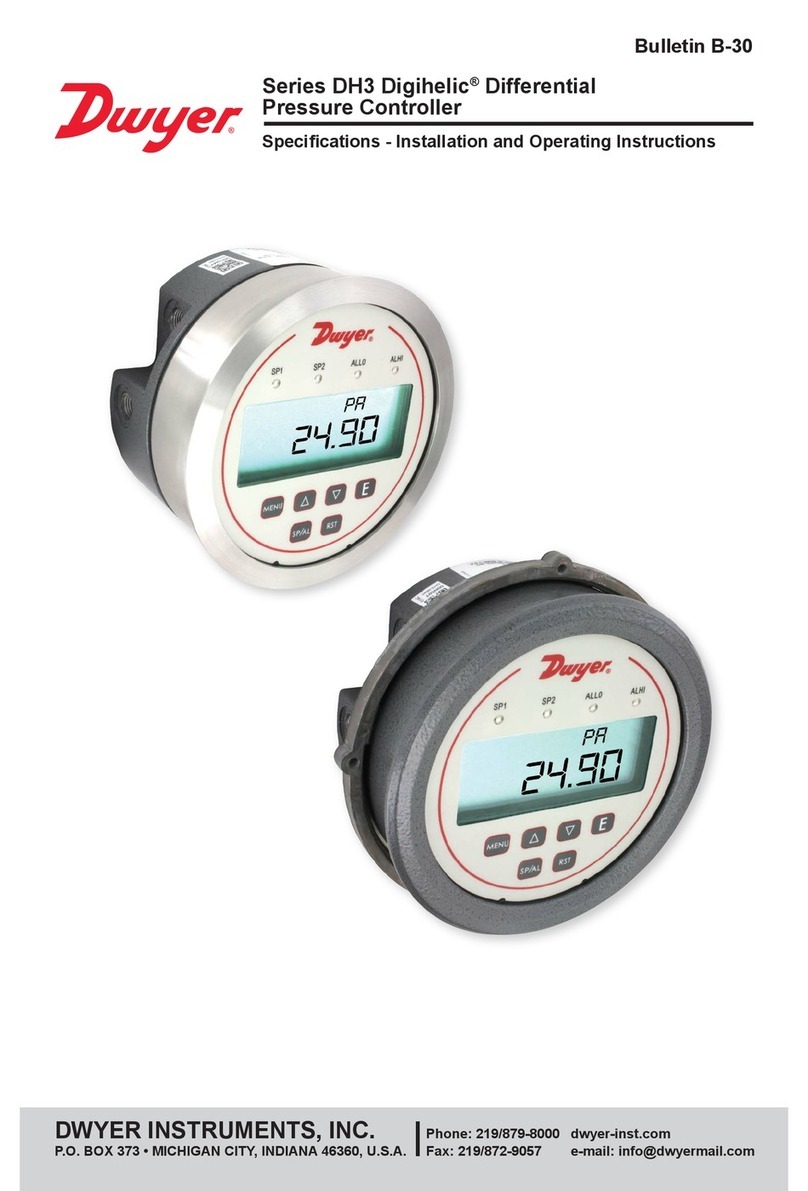
Dwyer Instruments
Dwyer Instruments Series DH3 Digihelic Installation and operating instructions
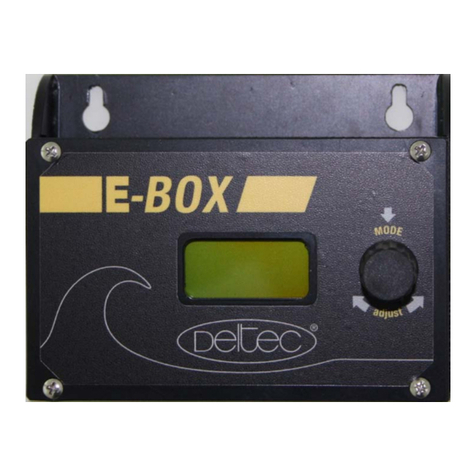
Deltec
Deltec E-BOX manual

NTI AG
NTI AG LinMot E1000 Series installation guide
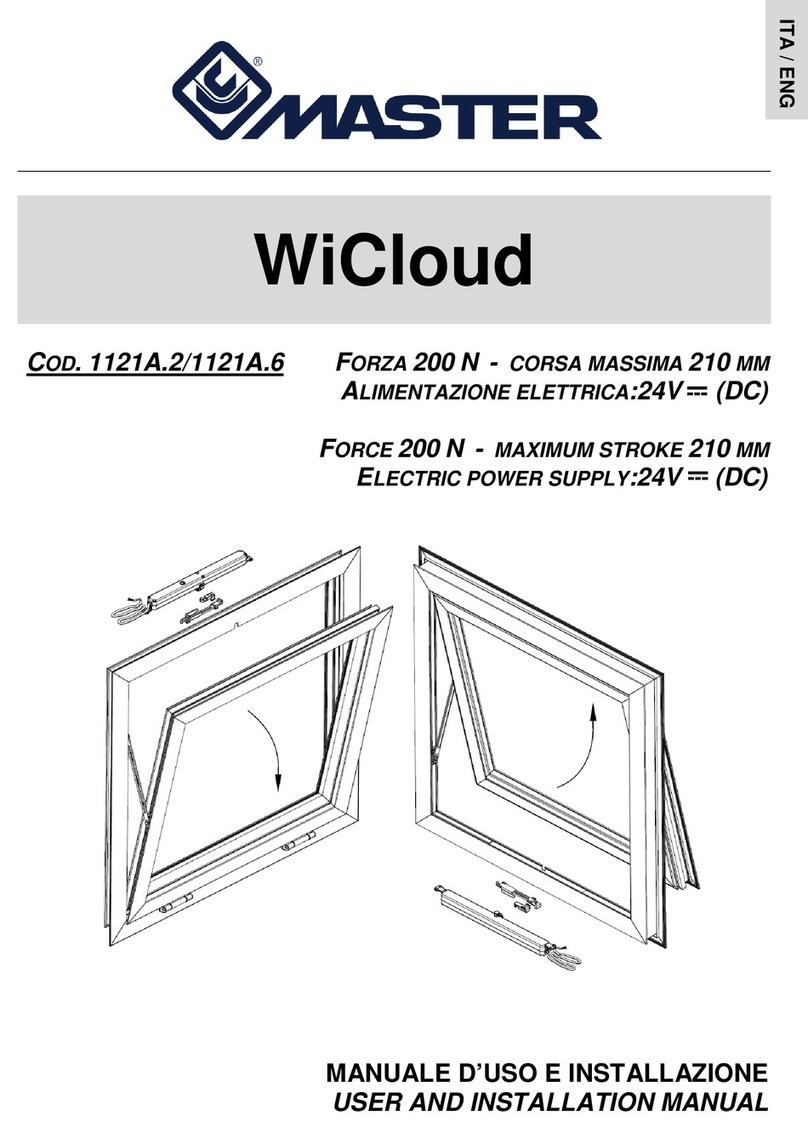
Master
Master WiCloud 1121A.2 User and installation manual
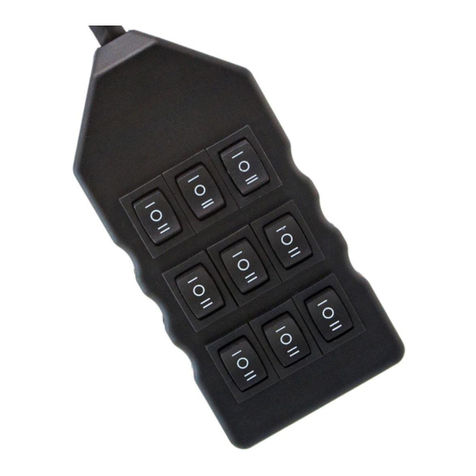
Vixen Air
Vixen Air VXF9C3B installation guide
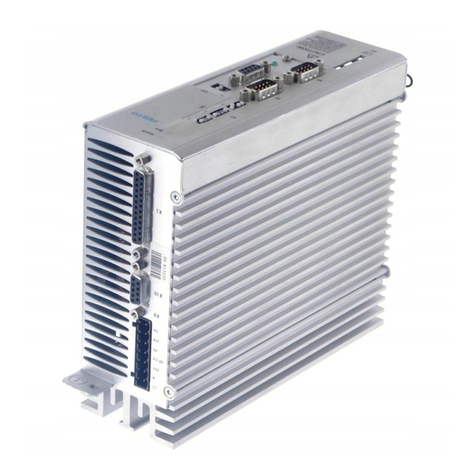
Festo
Festo CMMS-AS G2 Series manual
